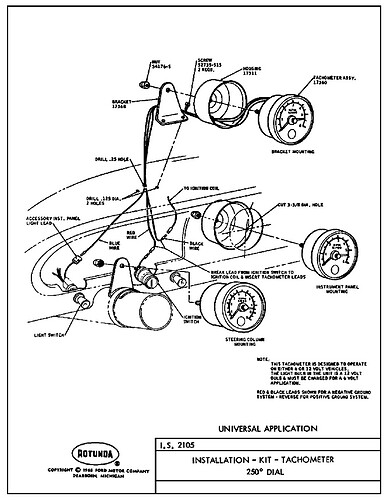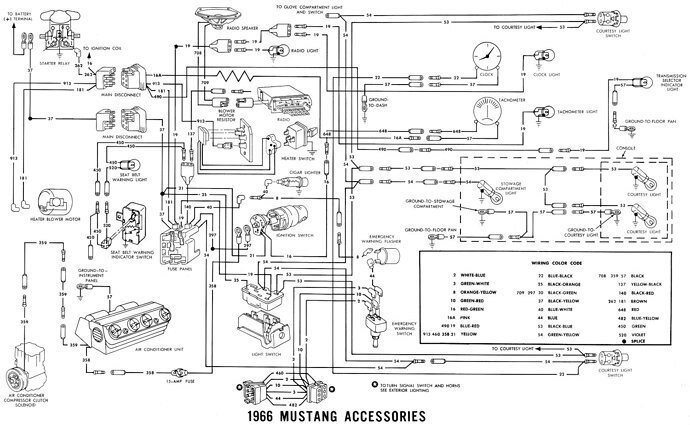I’m very gratified that we have found ( a little ) common ground re this discussion. Yes, I have never, and would never, use the stock Ford 6v coil in my P-1 conversions. I feel the MSD Blaster II epoxy filled coil is a better quality product than the Pertronix equivalent product. However that is just a subjective conclusion. They can be painted black with a yellow top if a stock-like appearance is desired.
A yellow paint that you might consider using is the CAT yellow found on all CAT equipment. IMHO it’s a closer match than the JD yellow.
I’d like to express my very lonely stand regarding the Pertronix ignitor products. For many years I’ve used them, but primarily have personally used the top of the line MSD ignition for about 15 years. I gravitated away from the Pertronix ignitors because they seem to have very little quality control, an area the MSD products excel at. I’ve have numerous 1st time customers car towed in with Pertronix I failures (I didn’t install them). And I’ve seen all kinds of failures, DOA out of the box, died when the motor gets hot , and also those which exhibit an intermittent miss. I know the majority of them work as advertised. But these well documented failures are why it’s common practice to keep a set of points in the car so you won’t get stranded. That is one reason I make it very easy to revert back to the original wiring. If someone comes to me these days and wants an electronic ignition, I won’t put in a Pertronix product, and will use MSD only if I can’t talk them out of it.
After drinking the MSD Kool-Aid fro 15+ years, I took a bet with a car pal, who said that my '66 GT350 would run the same and start the same, and idle the same, and have an identical dyne run with the stock ignition in place. I lost the bet. My car lost zero power, and idled the same with the stock ignition as it had with a MSD Digital 6+ ignition box and the top of the line MSD HVC-II coil.
Most people compare a Pertronix ignitor or an MSD ignition with their existing stock ignition which invariably has dirty or worn out points, or a failing condenser. Under those conditions the Pertronix is always going to give a better idle, etc. Apples to Oranges. These folks have a car that is running poorly, and rather than learn why, they assume that the problem must be outdated technology. Usually these people have no history using this old technology and don’t understand what maintenance is required.
Since that wager about 8 years ago, I threw out the Kool-Aid & replaced my MSD set up with a set of high quality points and condenser, and a used Ford yellow top coil (not a repro). Since then, I put nearly 25,000 miles on the GT350, and nearly 20,000 on a '65 K code, all with the stock ignition components. I adjust the point gap and dwell once every 7,500 miles. Not a lot of maintenance for me, but I understand that 10 minutes every year or so might be more than someone else would want to do. But when someone says that a lot of time is required to maintain a stock ignition, and to set points and dwell correctly, this is just not borne out by the facts. Also its just not the case that the idle is better with a Pertronix ignitor or a MSD box and distributor IF the points are not worn out or dirty. But, that doesn’t stop the companies that sell these products from using unfair comparisons in their advertising.
More voltage to the spark plug is something that the electronic manufacturers do have right. But this increased voltage is just not required to have an excellent running vintage car. It does sound impressive though, but adds nothing to the performance of a well tuned car.
I did have one customer who hounded me incessantly to install a P-1 ignitor, because, as he said, “the car won’t run right with points”. Finally I secretly installed a new set of echlin points and condenser from NAPA, and set the dwell and timing. He picked up the car, but before i let him pay me I told him to drive the car around for 30 minutes, them come back and tell me how it performed.
You can see where this is going. He came back and raved about the drive. The car ran better than ever before, it idled smoothly, it was the best money he ever spent, etc. etc etc.
I broke the news to him that he was driving around with a well adjusted points and condenser, and that I would put in a Pertronix ignitor for free if he ever felt the points weren’t providing the performance he wanted. Once he got used to the idea that he had been fooled, he began to warm up to the idea, and now I couldn’t get him to switch if I wanted to.
regards,
Z

